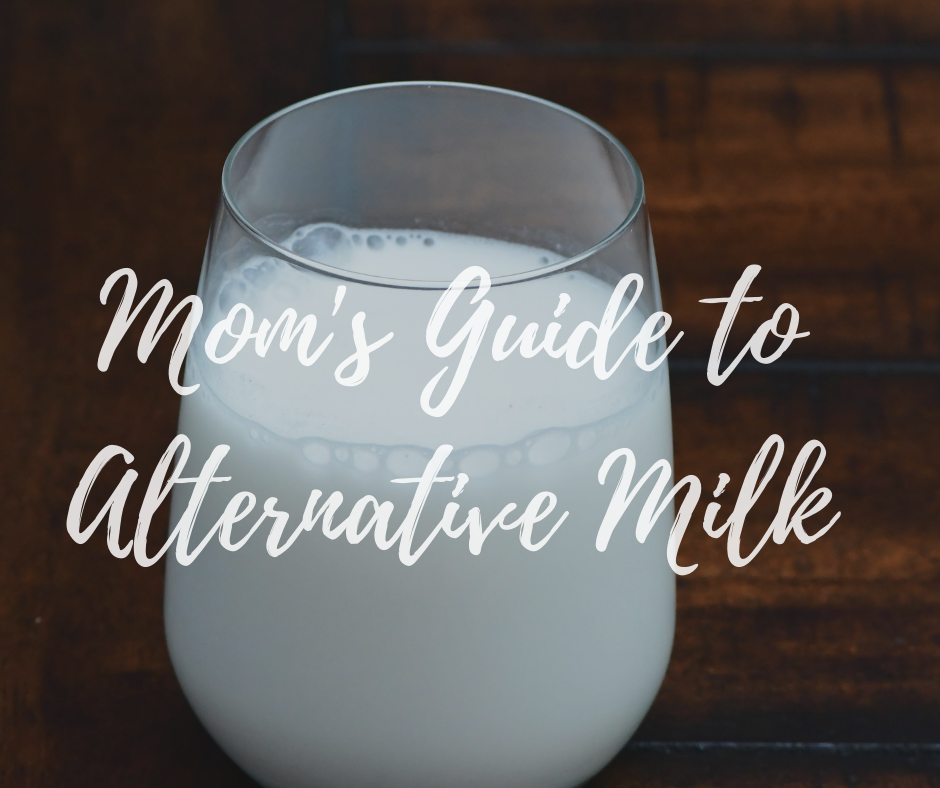One Mom’s Guide To Alternative Milk
I’m sure you’ve heard about the variety of milk options that are now out there. A sharp rise in veganism, dairy intolerance, and preference in taste has had people turning away from cow’s milk. Now a days there are so many options available that it can be a little daunting for us mamas to make an informed choice and read through labels when we’re wrangling a couple of kids through the store.
I wanted to provide a breakdown of the different type of milks out there and include some brand names that you’ll more than likely see in stores. Now please know I’m no nutritionist, doctor, or anything of that sort, just a mama whose family drinks alternative milk.
Our family is vegan and I was on the hunt for the best type of milk to provide to my growing vegan baby and the best type of milk for my much needed morning coffee.
Soy Milk
What it is: This is one of the most popular alternatives and has been around for a very long time. Soy milk is made from whole soybeans or soy protein isolate. It is the least processed of all alternative milks and is high in protein and low in saturated fat.
Uses: Great in savory dishes, coffee, your morning cereal, and in baking.
Taste: Creamy and mild taste.
Brands: Silk, Pacific Natural Foods, Soymilk, 365 Everyday Value, WestSoy
Almond Milk
What it is: Almond milk is made from whole almonds or almond butter and water. Almond milk is one of the lowest-calorie milk alternatives, has a high level of calcium, and is a natural source of vitamin E.
Uses: Great in coffee, teas, smoothies, oatmeal, and baked goods.
Taste: Light texture with a sweet and nutty flavor; usually also comes in other flavors like vanilla and chocolate
Brands: Almond Breeze, Silk, Califa Farms, New Barn Barista, 365 Everyday Value, Blue Diamond Almond Breeze
Coconut Milk (We’re talking about those sold in cartons not cans)
What it is: Made from water and the white flesh of brown coconuts. It has the lowest protein and carbohydrate content.
Uses: Cocktails (yum), desserts, smoothies, and coffee
Taste: Creamy texture with a sweet coconut flavor.
Brands: Pacific, Silk, So Delicious, Califia Farms
Flax Milk (My personal favorite for smoothies and coffee)
What it is: Made from flaxseed oil mixed with filtered water and contains no cholesterol. It also contains omega-3 fatty acids and are low in calories.
Uses: Coffee, smoothies, desserts, dressings, and sauces
Taste: Neutral flavor with a thin texture
Brands: Good Karma, FlaxUSA
Rice Milk
What it is: Made from milled white or brown rice and water. This milk alternative is one of the safest ones for those who are allergic or intolerant to dairy, gluten, soy, or nuts. It’s important to note that rice milk has a high glycemic index meaning that it can rapidly raise blood sugar levels, not a great option for diabetics.
Uses: Smoothies, baked desserts, oatmeal, and cereal
Taste: Mild, neutral, and naturally sweet with runny texture.
Brands: Pacific, Sprouted Rice Dream, Kirkland
Oat Milk
What it is: Typically made from a mixture of oats and water. Oat milk is high in fiber and beta-glucan. In a random conversation with a vegan barista one day she confided in me that oat milk is the best for lattes, cappuccinos, etc because it steams and froths like ‘regular’ milk.
Uses: Savory dishes, coffee, desserts, cereal, and smoothies
Taste: Buttery, thick, naturally sweet and mild
Brands: Oatly, Silk Oat Milk, Pacific
Bonus Milk!
Pea Milk
What it is: Made from pea protein typically mixed with sunflower oil, sugars, etc. There are currently only two brands that make pea milk and both strive to ensure that you get a lot of protein in one serving. (Ripple 8g, Bolthouse Farms 10g)
Uses: On it’s own, coffee, sauces, oatmeal, and cereal
Taste: Skim milk consistency and light flavor
Brands: Ripple, Bolthouse Farms
Please note that I covered 7 of the more popular milk alternatives, there are plenty more out there!
If you’re the DIY kind of person you can always make your own alternative milks. There are plenty of how-to videos online and blogs devoted to making, storing, and enhancing the flavor of your home made alternative milks. Keep in mind that those sold in store have additives like vitamins, protein, etc that you may not be able to include in your home made versions.










